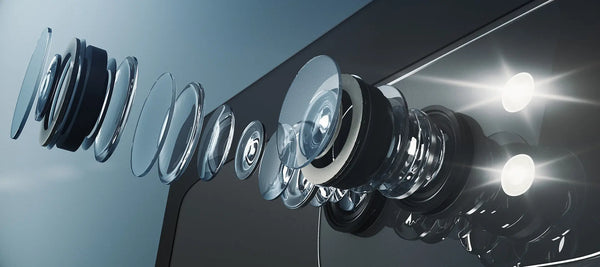
Rise of The Smartphone
Rise of The Smartphone

The smartphone has changed the lives of billions of people putting the power to connect globally in the hands of almost everyone via the internet, with apps for almost every conceivable task.
Visual communication via photos, videos, live chats and the like have enabled people to stay in touch or even make new friends and communities and, for better or worse, spawned the Youtube and TikTok generation where everyone and their dog, literally, strive to create content.
Apparently 1.72 trillion photos are taken annually, with 92.5% of those taken with smartphones. Whilst that Smartphone figure is impressive, it’s probably true that >90% of Smartphone pictures are probably throwaways.
Still, it’s a considerable number and, importantly, growing, as is the seriousness of people using smartphones for professional work.
Photography
The best camera is the one you have with you, and we all now have them in our pockets.
Modern mobile phones now have multiple lenses and sensor combinations, powerful processors, and incredible AI.
They already killed the compact camera market, and are now able to offer most people a perfect image capture device to rival and out-perform the high-end pocketable cameras they replaced.
Most people just post selfies, holiday snaps, or other social events to share on social media.
The hobbyist/enthusiast that would have bought high-end compact (pocket) cameras, and potentially upgraded to a “real” camera, is the market for the Smartphones that boast cutting-edge camera features, and also enthusiasts and professionals that always want the best camera in their pocket at all times.

The quality is pretty impressive and we can now see the 11th annual Mobile Photo Awards winners like the above People category winner, and a vast array of fantastic photos in a large number of categories, here.
Although the technology is improving, the sensor and lens sizes will always be the limiting factor when it comes to mobile phones.
Although more expensive, there’s a huge number of situations where a larger camera is better, from image quality, dynamic range, control over zoom, focus etc., but it is fast becoming a niche interest as Smartphones become “Good enough” for most people.
This is already having an impact on camera prices, and even product development. DSLR cameras are getting faster, have more AI, and connectivity, as they have to to compete with smartphones.
The rate of technological improvement is such that predictions are difficult to make, but with most people consuming digital media on small screens, the Smartphone is clearly going to be a huge player in the digital domain.

A Smartphone is a compromise, albeit a good one for most people. People who have a passion to create often pursue their craft and seek better tools, and the DSLR market is the ultimate for control and quality of output.
DSLR cameras for photography will be the domain of professionals and serious enthusiasts/creators that require the performance and final output of the larger sensor and lenses.
Videography

Arguably, the smartphone revolution has put more video cameras into the hands of the global population than any camcorder manufacturer could have dreamed, but can they really be used for movies?
The answer is yes, with caveats.
Modern smartphones are now fully capable of 4K recording at multiple frame rates and software and features to make video recording a breeze. The limit is your imagination.
The story of these Nigerian children is a shining example of the democratisation of movie making, with smartphones bringing the ability to make movies to anyone with a smartphone.
This video of their first movie links to their channel on YouTube and is worth a watch!
Serious contenders for Smartphone feature movies are covered in Mobile Motion’s video “The Best Feature Films Shot on a Smartphone - Part 1” and then Part 2.
Mobile Motion’s YouTube channel seems to offer a wealth of information about SmartPhone filming.
With the Sony Xperia 1 III offering 4K HDR recording at 24, 25, 30, 60 and 120 fps slow motion with different lenses from 16mm to 105mm, and a host of controls suited to film shooting, it’s clear that they and the likes of Google and Apple are serious about the video market.
Coupled with the ever increasing accessory market with gimbals, cages, lights, mics, and more, the potential is huge from vlogging to movie making; and let’s not forget the apps that allow you to add VFX to any video within your smartphone.
Although a dedicated Desktop Application is going to give you more professional results, and there are some great free options, with DaVinci Resolve being perhaps the most powerful one. With great footage and sound, you can make a Hollywood movie with Resolve if you invest in the time and effort to master the software. Its most basic editing skills are intuitive or a free YouTube Tutorial away from multiple creators for any function.
With movies, however, you still need actors, a good story, good lighting, and great sound for it to work. The features in Mobile Motion’s videos are possible because of the combination of a great director who paid attention to the other factors beyond the camera. It’s worth noting that the Nigerian crew were more than happy to accept the upgraded gear to have more potential beyond the possibilities of a Smartphone.
Despite previous promotions from the likes of Apple, it’s clear that now is the genuine breakthrough for people to enter into the world of mobile phone movie creation to test and hone their skills before moving up to better and more expensive equipment.
The rise of the smartphone marches on, and it’s a great tool for photographers and videographers as a gateway into both professions.
The capabilities are perfect for public use or online content from creators starting out and testing their market before investing in larger format and more expensive options.
What’s your experience with Smartphones as a stills or video camera?
